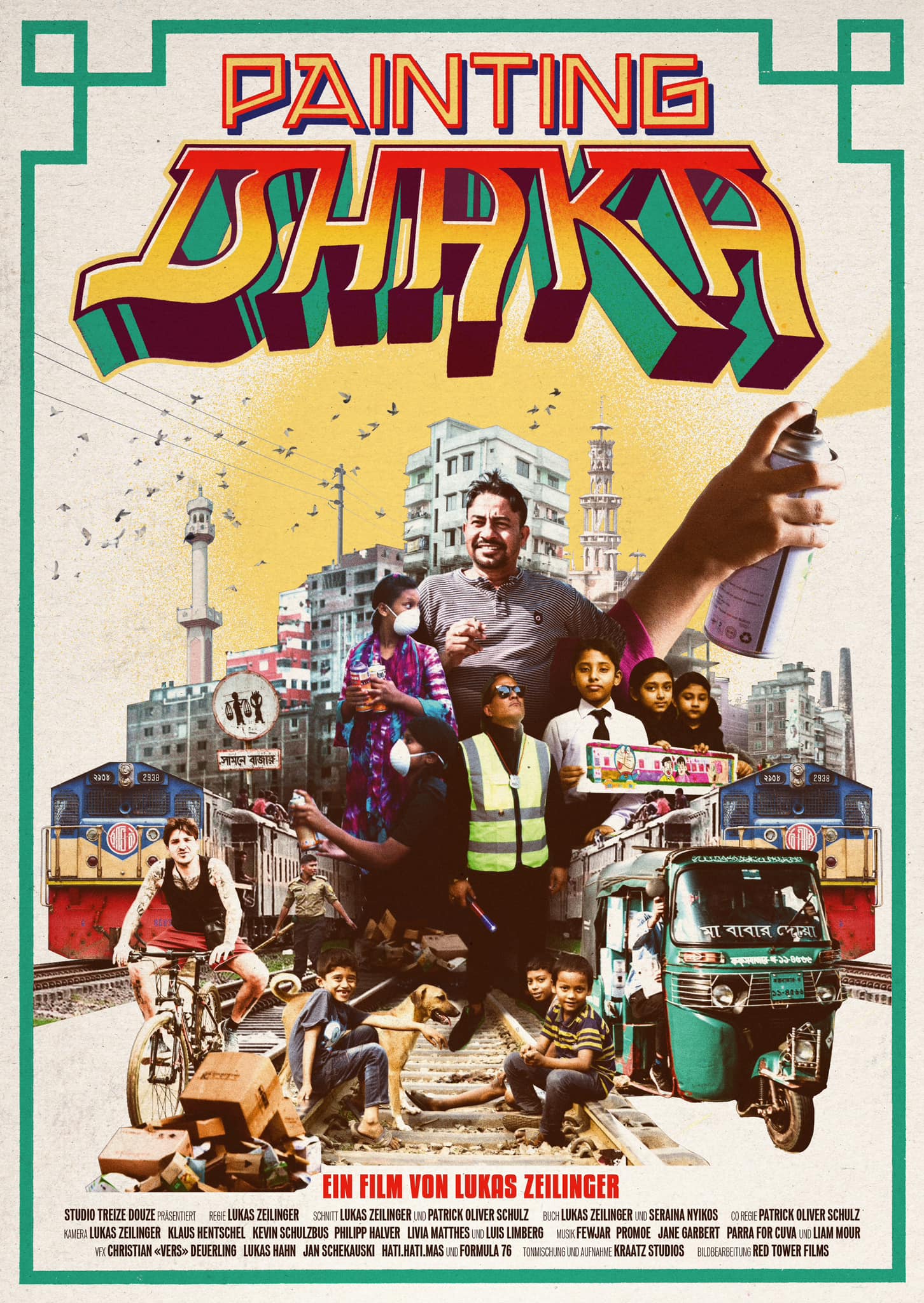

 painting_dhaka
painting_dhaka
PAINTING DHAKA
A film by Lukas Zeilinger
An art project in the slums of Bangladesh and the question: How corrupted is our view of a corrupt country?
The film „Painting Dhaka“ takes the viewer on a journey to one of the poorest areas in the world: the slums of Bangladesh’s capital Dhaka.
In a mixture of documentary, animation and art film, the narrator and main protagonist Lukas Zeilinger delves further and further into the swamp of poverty, corruption and oppression and gradually exposes the country’s broken political system.
What begins as a film accompanying a graffiti workshop in the poor quarters of the Bangladeshi capital develops over the course of the plot into a veritable docu-crime thriller about the real swamp of the country: the corrupt Bangladeshi elite, which enriches itself from the poverty of its inhabitants.
At the centre of the action: the state railway company Bangladesh Railway. „Painting Dhaka“ is a film about power and powerlessness – and how to overcome both. And a personal film about the power of art.

„Bangladesh is one of the poorest countries on earth and Dhaka, its capital, is a monster; A machine that never stops, an inhospitable place and home to twenty million people who live in their city and will eventually die here too. Almost half live in illegal settlements. The simplest huts, patched together from cloth, corrugated iron and rubbish. A mosaic of existences, fates and survival. No, no tourists stray here. Only people who also live and work here come here; work for a pittance so that the rest of the world can wear clothes, new trainers and a carefree conscience.
The price is paid by others; people I have met here in Dhaka on my journey. People who are quick to share their lives with me, even though we didn’t know each other a few minutes before. Families with children who laugh, play and go to school. This is also where I met Babul Aminul Hoq. Babul is the headmaster of a small slum school, which is like an island in the middle of the sea of houses covered with corrugated iron and cloth. And Babul is the project manager of the German Doctors, a German NGO that supports schools in Dhaka.
Full of pride, he shows me the place he helped to build. A place of the future, a future that consists of education and knowledge. A place where poverty plays no role. Everyone is welcome here, everyone is allowed to learn. School attendance is free, including a hot meal and medical care in one of the two small treatment rooms. The only thing is that these rooms have not been entered for some time. The money is not enough. It costs 12 dollars to provide a child with food, education and clothing for a month, Babul tells us. But the money is not there either. The future of the school is uncertain, that of the children even more so.
The school building is only a few metres away from the tracks. Every few minutes, a train rushes past the school. Even closer to the tracks are only the huts of the residents, which vibrate with every passing train and threaten to collapse. The settlement has grown right up to the tracks, every inch of earth built on and occupied. Here, there is no plan from the building authorities that regulates minimum distances, sets safety requirements or prescribes the width of the pavement. Life, the city, everything is so different in Dhaka than in Berlin, but one thing is the same: the sound of the passing train is familiar. To this day, the sound of trains whizzing by, no matter where in the world, reminds me of the time when I spray-painted my first train at the age of 14 and realised that with the spray can I achieve what is so difficult in normal life: recognition, self-confidence and a loud „Hello here I am“ that shortly afterwards travels through the entire city and shows everyone that I exist.
If there’s one thing I’ve learned in my life and travels, it’s that graffiti works everywhere in the world. But also in Dhaka? Does this art form also work in a country where people live to survive? Can painting graffiti also boost self-confidence here, where happiness often just means finding a hot meal a day?



